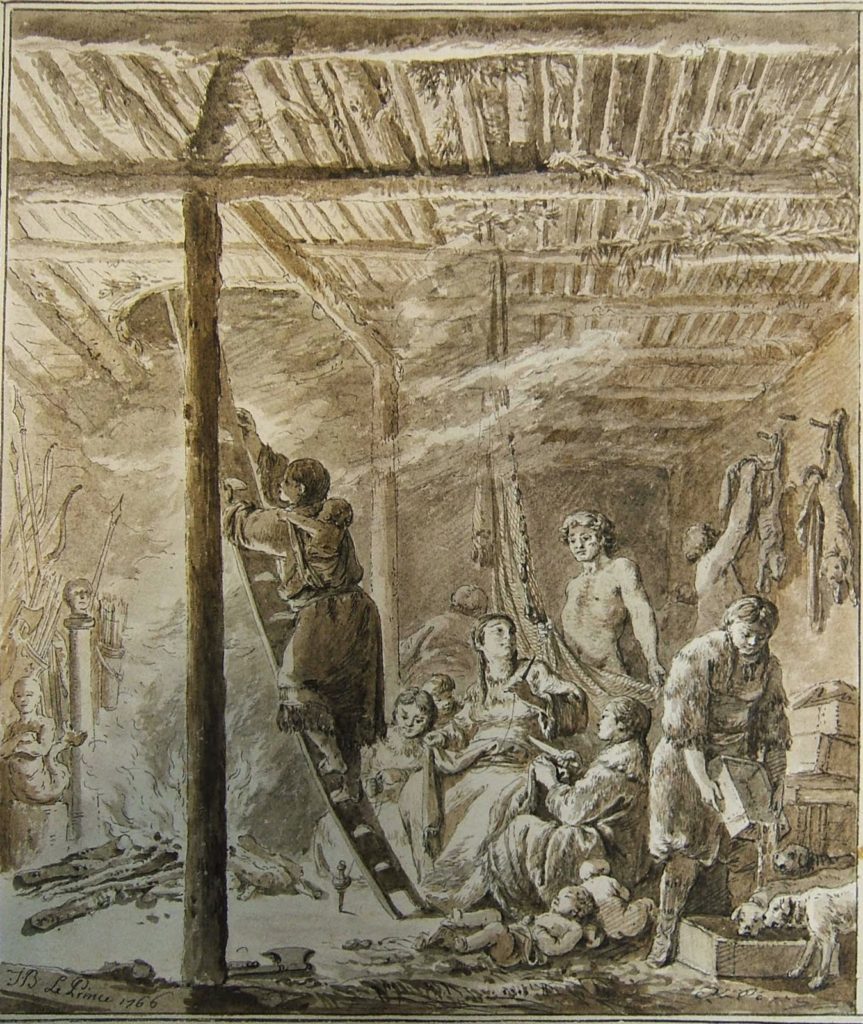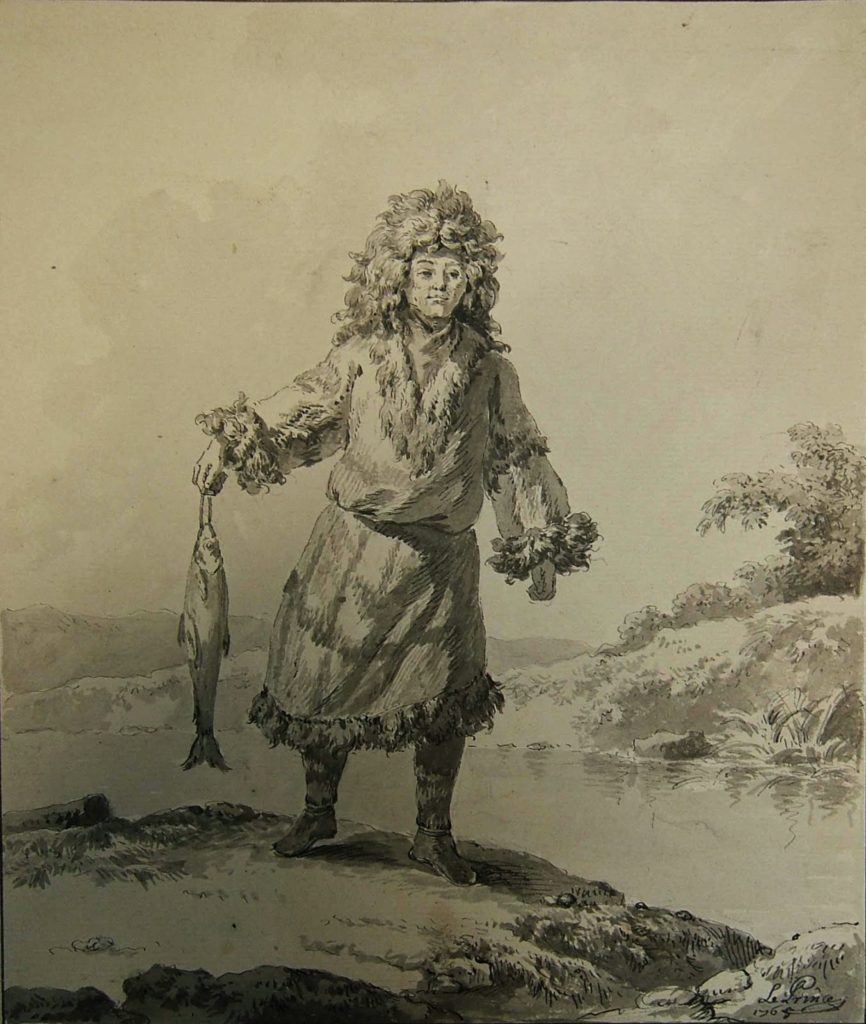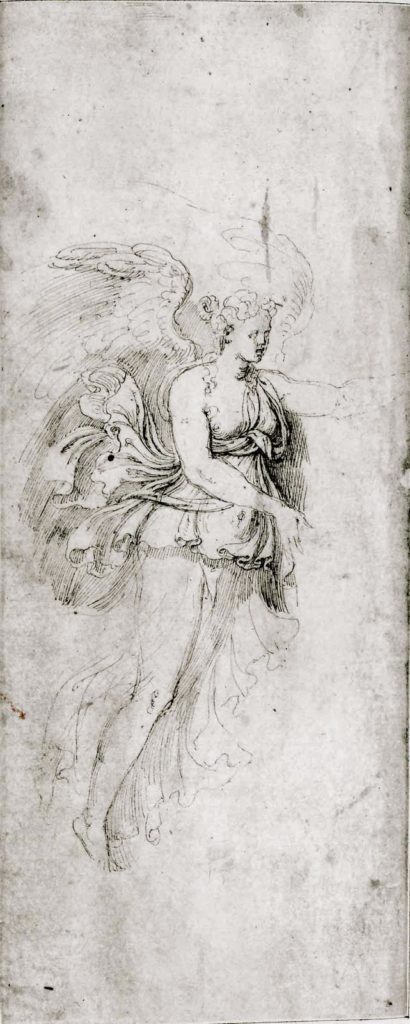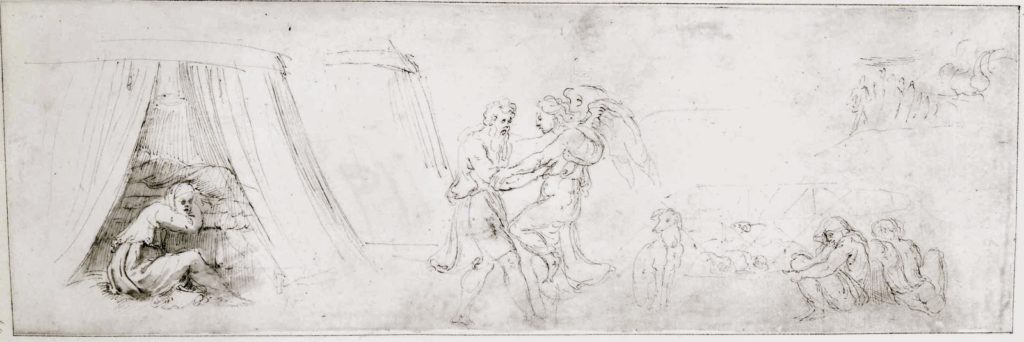summer is here and it is time for travel I would like to share a few works related
to travel from our collections. They come from two artists—one, a Renaissance
Italian who spent time in Italy’s greatest cities and the other an
Enlightenment-era Frenchman who sought to illustrate customs of the rural Russian
people. These works on paper are depictions of life and art in two areas: one,
the well visited eternal city of Rome, and the other the less visited but no
less fascinating region of Siberia, Russia.
Jean-Baptiste Le Prince was born in
Metz, France in 1734. The son of a sculptor, Le Prince entered the Paris art
studio of Francois Boucher in 1750. It is here he developed his richly textured
style after the master Boucher. After a
brief and unsuccessful marriage Le Prince set off to Russia in 1758 to join
other flourishing French artists. Le Prince entered a Russia that was soon to
be ruled over by Catherine the Great. Russia had been undergoing immense
military and cultural change—Russia was emerging as a world power. It was here in the 1760s that Le Prince met another
Frenchman—the astronomer Jean Chappe d’Auteroche. Chappe traveled to remote
Siberia in an effort to collect observations of the path of the planet Venus across the earth’s orbital plane. More than this, Chappe sought to explore the character of the Russian people. Based on his observations of the Russian people Chappe authored Voyage en Siberie published in 1768. This four volume work, illustrated in part by Le Prince, is one of the most beautiful and informative travel accounts of the 18th century.
All Le Prince drawings in the Rosenbach collection are highly finished in pen and ink with grey wash. They were purchased by A.S.W. Rosenbach in 1922 as part of the Roederer Collection—a world renowned collection of 18th century French drawings, prints, and illustrated books assembled by Louis Roederer (d. 1880).
 |
|
| Jean Baptiste-Le Prince, Iourte ou Habitation Souterraine des Kamtchadals Pendant L’Hiver. 1766. 1954.397. Rosenbach of the Free Library of Philadelphia. |
 |
| Jean Baptiste-Le Prince, Kamtchadal dans son Habit D’Hiver. 1766. 1954.400. Rosenbach of the Free Library of Philadelphia. |
Girolamo Da Carpi is mentioned in Vasari’s Lives of the Artists as being the son of
a house-painter destined for greater artistic achievement. He was born in Ferrara in 1501 and as a youth
traveled to Bologna to find independence as an artist. Thus began a career of a
well traveled and busy artist. He spent time in major Renaissance cities at
work on a variety of commissions.
sketches were created. Da Carpi drew many sketches after ancient and contemporary works
in the eternal city. The sketches are not only beautiful drawings, but
preservations of the antique heritage of Rome in the Renaissance period. They are a testament to how two brilliant artistic ages existed side by
side.
 |
| Girolomo da Carpi, Victory. 1954.0807.063. Rosenbach of the Free Library of Philadelphia. |
140 feet and is adorned with relief sculpture. In particular Da Carpi was
interested in the victory reliefs. These commemorate Trajan’s campaign against
the Dacians.
 |
| Girolomo da Carpi, Jacob’s struggle with the angel.1954.0807.063. Rosenbach of the Free Library of Philadelphia. |
They were the work of Raphael, completed in 1519. This is a drawing of one of
the now-lost 13 scenes of the monochrome frescoes in the socle zone of the
loggias. This particular scene of Jacob wrestling with an angel comes from the
socle of the sixth arcade. It is a religious scene with great power and a
remarkable piece of documentary evidence of the how the loggias looked not many
years after their completion.
from the daughter and grandson of the great English collector Sir Thomas
Phillips (d. 1872).
